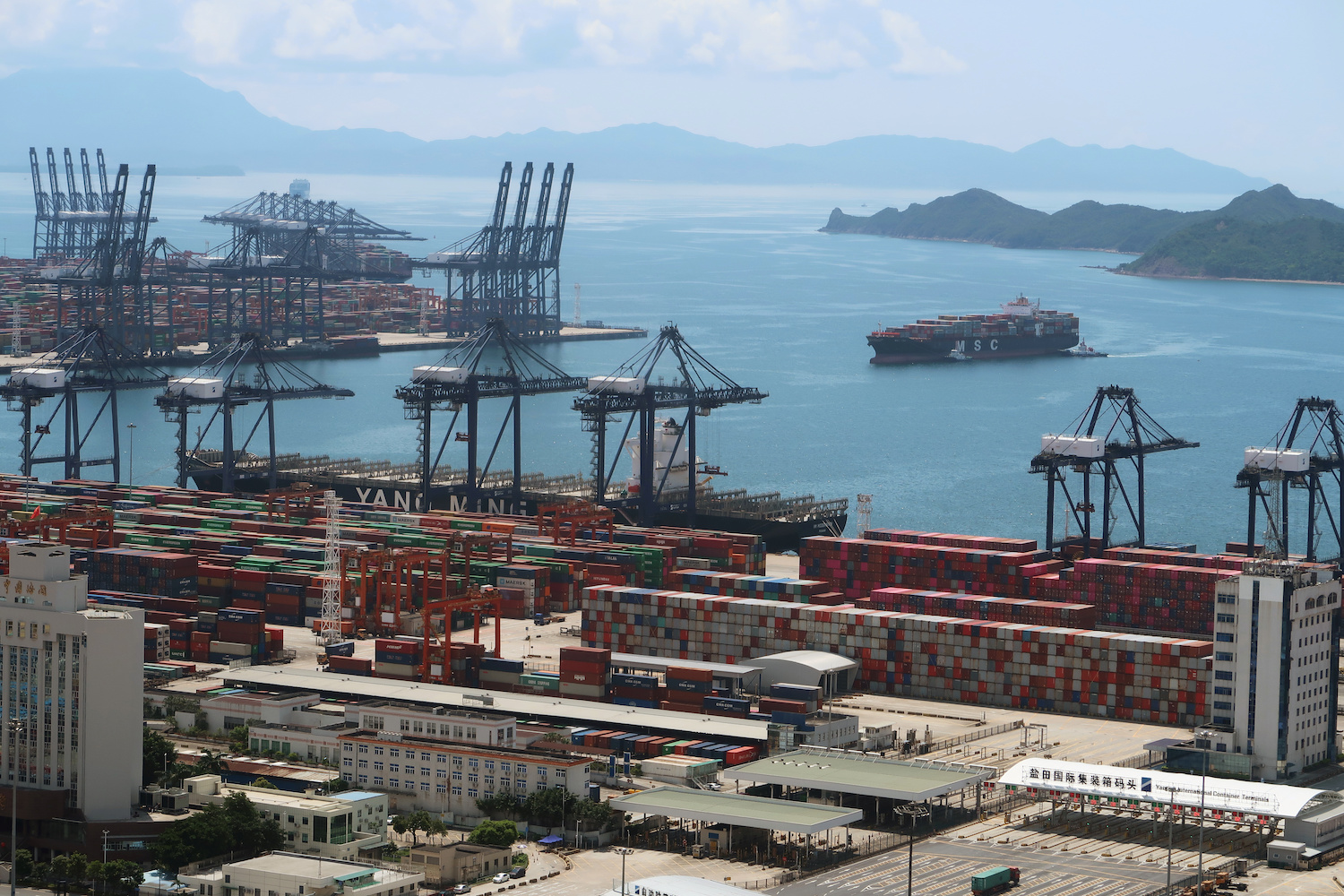China’s economic rebound from the coronavirus pandemic is being blunted by a global shortage of shipping containers.
Cargo costs have soared to record highs hampering manufacturers struggling to meet global goods orders, as delays in containers returning to China due to the pandemic overseas have put the squeeze on export flows.
Exports from China surged by 21% in November from a year ago as the country’s industrial machine cranked out mountains of appliances, toys, clothes, personal protective equipment and other items currently in high demand around the world.
But due to China’s lopsided trade balance – exporting three containers for every one imported – and delays in containers coming back from pandemic-hit countries, manufacturers are struggling to find slots to transport their goods out of the country.
Read More: In the race for foreign investment, can India gain from China’s loss?
Roughly 60% of global goods move by container, and according to United Nations trade data there are close to 180 million containers worldwide.
“We have so many orders but just cannot ship things,” said Charles Xu, a mirror salesman in the export manufacturing hub of Yiwu in Zhejiang province, who supplies US retailers such as Walmart and Home Depot.
“Boxes are piling up at our factory and we don’t have much space left. It’s just hard to book containers, and everyone is bidding for them with high prices,” he said.
Average container turnaround times have been stretched out to 100 days from 60 days because of Covid-19-related handling capacity cuts in Europe and the United States, according to the China Container Industry Association (CCIA), and that has exacerbated the shortage. US importers already reported problems with shipment delays in November.
AIR FLEETS GROUNDED
The grounding of much of the global international passenger air fleet – which often also carries cargo – has also boosted demand for maritime freight space.
With little change in prospect before coronavirus vaccines are rolled out globally, changing the dynamics of trade and freight, shipping rates have spiked as a result.
The cost of chartering a 40ft container from China to the US East Coast hit a record $4,928 this week, up 85% since June 1, according to Freightos data in Refinitiv Eikon.
Rates to Europe have jumped 142% over the same period, and by 103% to the Mediterranean via the Suez Canal.
The rates for some shorter-haul – and lower-margin – routes have jumped by even more. The Ningbo Containerised Freight Index from China to Singapore/Malaysia soared nearly 300% between early October and early December as a bidding war for shipping space broke out among Southeast Asian exporters.
FIVE-YEAR HIGH
Container manufacturers have expanded shifts and boosted capacity to try to keep up with demand, but are still falling short. Monthly output in China – which accounts for 96% of global production – hit a five-year high of 300,000 units in September, according to CCIA data.
Sensing a profit-making opportunity, some private Chinese firms have been stockpiling containers and making them available to the highest bidder.
“Now there is a mafia. You pay extra to get access to containers from private yards, not shipping yards,” said a Yiwu-based vendor of household goods, toys and stationery.
“Each container can cost 3,000 RMB, which is almost $500, and the freight is already three times higher than normal. Everyone’s making money, but we aren’t making money.
“Right now the wait for a container is two to four weeks. I still don’t know if I will have container or not,” they said.
GOVERNMENT SUPPORT
Shipping associations in South Korea, Malaysia and elsewhere have now requested government support in offsetting surging freight costs, while others are opting simply to try to sell more goods at home.
But others have little choice but to pay up. “Sometimes, it’s just an endless wait until you run out of patience and ask them ‘how much do you want?’,” said Hill Xiao, who runs an export business in southern China’s Guangdong province that helps factories sell clothes and toys abroad.
- Reuters. Additional reporting by Roslan Khasawneh, Zhang Min, Lisa Baertlein and Jonathan Saul
























